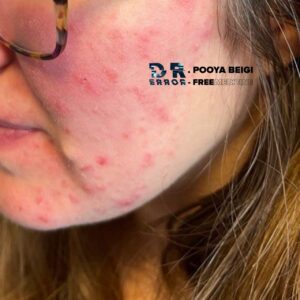Overview
Acne
Acne is a prevalent dermatological condition characterized by the appearance of pimples, most commonly on the face, though it can also affect the back, chest, and shoulders. This condition arises when hair follicles become clogged with oil (sebum) and dead skin cells. While acne predominantly affects teenagers and young adults due to hormonal changes, it can persist into adulthood. Effective treatments are available to manage acne and prevent potential scarring, making early intervention crucial.
Types of Acne
Acne presents in various forms, each with distinct characteristics:
- Fungal Acne (Pityrosporum Folliculitis): Occurs when yeast builds up in hair follicles, leading to itchy and inflamed bumps.
- Cystic Acne: Involves deep, pus-filled pimples and nodules that can result in significant scarring.
- Hormonal Acne: Typically affects adults and is driven by hormonal imbalances that cause excessive sebum production.
- Nodular Acne: A severe form causing large, painful nodules under the skin’s surface, often resulting in scarring.
Each type of acne can impact self-esteem and, in severe cases, lead to permanent skin damage. Consulting a healthcare provider early can help determine the most effective treatment options.
Prevalence and Demographics
Acne is an almost universal experience, affecting approximately 80% of people aged 11 to 30 years at some point. It is most prevalent among teenagers and young adults undergoing hormonal changes but can also occur in adults. Women and individuals assigned female at birth (AFAB) are more likely to experience adult acne, often linked to hormonal fluctuations during menstrual cycles or pregnancy. Genetic factors also play a significant role, with a family history of acne increasing the likelihood of developing the condition.
Common Affected Areas
Acne primarily affects areas with a high density of oil glands, including the:
- Face
- Forehead
- Chest
- Shoulders
- Upper back

